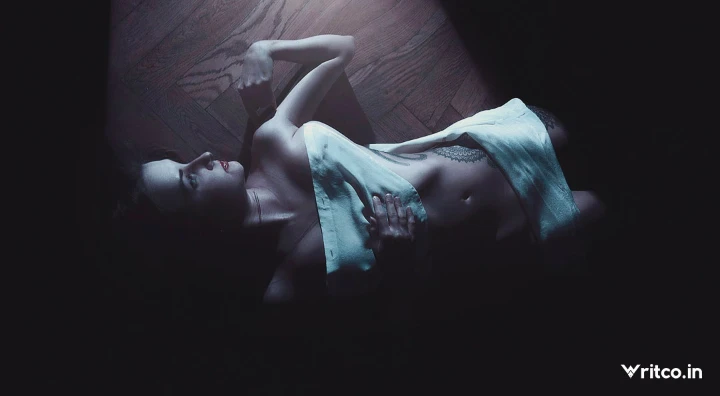Creative Will of Women
In Hindu cosmology, the concept of **Brahma's Will** and the **creation of women** is part of a rich and symbolic narrative about the origins of the universe and life. Brahma, one of the principal deities in Hinduism, is traditionally seen as the creator god in the Hindu Trimurti (which includes Vishnu as the preserver and Shiva as the destroyer). The creation of women is intricately tied to the broader creation narrative and carries deep metaphysical and symbolic meanings.
### 1. **Brahma's Will in Creation**:
- **Cosmic Creation**: According to Hindu scriptures, before creation, there was only the primordial void or chaos. Brahma, through the sheer power of his will (often referred to as *Brahma Sankalpa*), initiated the process of creation. He is thought to have emerged from a golden cosmic egg (*Hiranyagarbha*) or from a lotus sprouting from the navel of Vishnu, depending on the version of the myth.
- **Process of Creation**: Brahma's will is believed to have shaped the universe through his thoughts, desires, and actions. In some texts, Brahma creates the universe through his mind, first giving rise to the elements and then to living beings. This reflects the idea that creation is an act of divine intention and cosmic order, a reflection of Brahma's will to manifest the universe out of the unmanifest.
- **Creation of Living Beings**: As Brahma set out to populate the world, he created the *Prajapatis* (progenitors of all beings), gods, demons, animals, and humans. His creations were meant to inhabit and sustain the universe, contributing to the cosmic cycle of creation, preservation, and destruction.
### 2. **Creation of Women**:
- **Symbol of Duality and Completeness**: In many Hindu creation myths, the creation of women represents the introduction of duality and balance in the universe. This reflects the principle that creation is incomplete without the feminine energy. The concept of duality—male and female, light and dark, order and chaos—is central to the philosophy of Hindu cosmology. The presence of both male and female is necessary for the continuation of life and the cycle of creation.
- **Brahma's Creation of Woman**: According to one version of the creation story, Brahma created **Saraswati**, his consort, who is the goddess of wisdom, arts, and learning. Saraswati embodies *shakti*, the divine feminine energy that complements Brahma’s role as the creator. This mirrors the broader Hindu idea that feminine energy (Shakti) is an essential force behind all creation and activity in the universe.
- **The Story of Shatarupa**: Another well-known creation myth involves Brahma creating a woman named **Shatarupa** (literally "one with a hundred forms"). She is considered one of the first women in creation. The myth suggests that Shatarupa was so beautiful that Brahma, despite being her creator, became enamored with her. As she moved in various directions to escape his gaze, Brahma grew heads in each direction (thus Brahma is often depicted with four or five heads, symbolizing his all-seeing nature). This story reflects themes of cosmic desire, creation, and the interdependence of masculine and feminine principles.
- **Women as Sustainers of Life**: Women are...
### 1. **Brahma's Will in Creation**:
- **Cosmic Creation**: According to Hindu scriptures, before creation, there was only the primordial void or chaos. Brahma, through the sheer power of his will (often referred to as *Brahma Sankalpa*), initiated the process of creation. He is thought to have emerged from a golden cosmic egg (*Hiranyagarbha*) or from a lotus sprouting from the navel of Vishnu, depending on the version of the myth.
- **Process of Creation**: Brahma's will is believed to have shaped the universe through his thoughts, desires, and actions. In some texts, Brahma creates the universe through his mind, first giving rise to the elements and then to living beings. This reflects the idea that creation is an act of divine intention and cosmic order, a reflection of Brahma's will to manifest the universe out of the unmanifest.
- **Creation of Living Beings**: As Brahma set out to populate the world, he created the *Prajapatis* (progenitors of all beings), gods, demons, animals, and humans. His creations were meant to inhabit and sustain the universe, contributing to the cosmic cycle of creation, preservation, and destruction.
### 2. **Creation of Women**:
- **Symbol of Duality and Completeness**: In many Hindu creation myths, the creation of women represents the introduction of duality and balance in the universe. This reflects the principle that creation is incomplete without the feminine energy. The concept of duality—male and female, light and dark, order and chaos—is central to the philosophy of Hindu cosmology. The presence of both male and female is necessary for the continuation of life and the cycle of creation.
- **Brahma's Creation of Woman**: According to one version of the creation story, Brahma created **Saraswati**, his consort, who is the goddess of wisdom, arts, and learning. Saraswati embodies *shakti*, the divine feminine energy that complements Brahma’s role as the creator. This mirrors the broader Hindu idea that feminine energy (Shakti) is an essential force behind all creation and activity in the universe.
- **The Story of Shatarupa**: Another well-known creation myth involves Brahma creating a woman named **Shatarupa** (literally "one with a hundred forms"). She is considered one of the first women in creation. The myth suggests that Shatarupa was so beautiful that Brahma, despite being her creator, became enamored with her. As she moved in various directions to escape his gaze, Brahma grew heads in each direction (thus Brahma is often depicted with four or five heads, symbolizing his all-seeing nature). This story reflects themes of cosmic desire, creation, and the interdependence of masculine and feminine principles.
- **Women as Sustainers of Life**: Women are...



